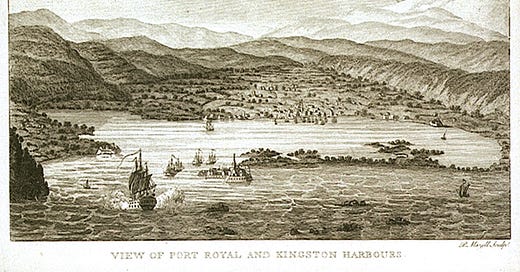Review of Smallwood's "Salt Water Slavery." (200
Stephanie E. Smallwood, Saltwater Slavery: A Middle Passage from Africa to American Diaspora (Cambridge, MA: Harvard University Press, 2008), pgs. 288.

Stephanie Smallwood, the director of the honors program at the University of Washington and a historian of the Transatlantic slave trade and slavery, frames the slave trade from Africa in her book Saltwater Slavery as key in understanding how Black life in the Atlantic world was shaped by the “blurred and bloodied boundaries between captivity, commodification, and diaspora.” (Introduction) In order to understand the process of creolization (blending of cultures to create a new one) in the new world that enslaved Africans entered, it is crucial to understand the idea of saltwater slavery, or the slavery between the ports on either side of the Atlantic world.
Smallwood’s book is framed in the arc of the slave trade. She traces this history of the slave trade from the Gold Coast (primarily in modern Ghana) to its conclusion in the Americas. However, she acknowledges that this framing of a narrative arc was not always how people remembered their experiences with the slave trade, noting that certain aspects took higher precedence than perhaps historians would emphasize.
Her narrative structure works well and Smallwood does an excellent job of integrating the Gold Coast into the Atlantic World. Rather than just a tributary to European powers that was forced into the trade, she guides readers through the complex power struggles between cultures and empires in the region. Warfare, which had been part of the region previously, changed as African societies eagerly engaged in the Atlantic world economy. For example, Smallwood notes how one group, which had traditionally massacred their enemies, began instead sending their captured enemies to the coast to sell. Furthermore, warfare increased, not only to provide captives for the trade, but also in order to control the vast non-slave trade networks that Europeans had little access to beyond the ports. In these efforts of African leaders to consolidate power and expand territorial holdings enslaved people functioned as soldiers, producers for the army, and finally as moveable capital to gain luxury goods that enriched African polities. This narrative thus troubles the innocent Africa narratives that have populated histories since the inception of the abolition movement. By no means is Smallwood less critical of European participation, but her thorough analysis adds much needed context to the world of Gold Coast enslaved people.
As Smallwood leads the reader into the port, her focus shifts towards the role that the slave compound and slave ship played in alienating and causing the “social death” (ie a person removed out of their culture) of African captives. This alienation is key for Smallwood. She disagrees with scholars who argue for the “group” theory of movement of Africans to the Americas and thus a recreation of African in American geographies. Rather, she notes that while slave ships did normally dock at one port, these ports were center points of a wide ranging interior slave trade that moved chattel down to the coast. The result was peoples who, though speaking similar languages, were culturally distinctive and frequently antagonistic to one another. This is a major blow to group identification and cultural cohesion theorists.
Smallwood also notes how Europeans used market oriented language (removing the human element of slavery) in a process Smallwood calls the alchemy of the market. This essentially was how Smallwood believes that Europeans could justify their participation in the slave trade. Europeans could stand the trade because they made it as dehumanized as possible.
The process of commodification was also an interesting theme. Slave ships worked to commodify and dehumanize those who were within the slave ship. However, enslavers were constantly locked in an inherent tension between commodification and recognition of a slave’s humanity. Most recognized the humanness of the enslaved as they recognized common human characteristics and negotiated with those they enslaved. This was in part because the enslaved refused to become commodified. It was only in this form of pushing back against the efforts of enslavers to label the portray the enslaved as an object, rather than as a living, breathing, human being, that helped define New World slavery.
Ultimately, Smallwood notes that saltwater slavery formed a “chain of migration that not only link[ed] Africa and the Americans in space but also continually projected the ‘salt water’ into the American present of diasporic Africa.” In other words, the slave trade and the passage and alienation of the migration remained imbedded in the African American experience. However, by reincorporating the distinction of salt water slavery, it becomes far more clear how narratives of the Black Atlantic can not be orderly or neat.
This was a well-developed book, though the author does not engage enough with European cultural difference enough (which is important because cultural distinction creates variable ways enslavers sought to handle those they enslaved, as well as how they saw those brought from Africa). Furthermore, the theoretical nature of many of the chapters left me wondering if there are ways to approach this idea of salt water slavery that are more accessible to lay audiences. With that said, this was a well written and nuanced book that adds another ripple to scholarship of the Black Atlantic world.
Robert Swanson



